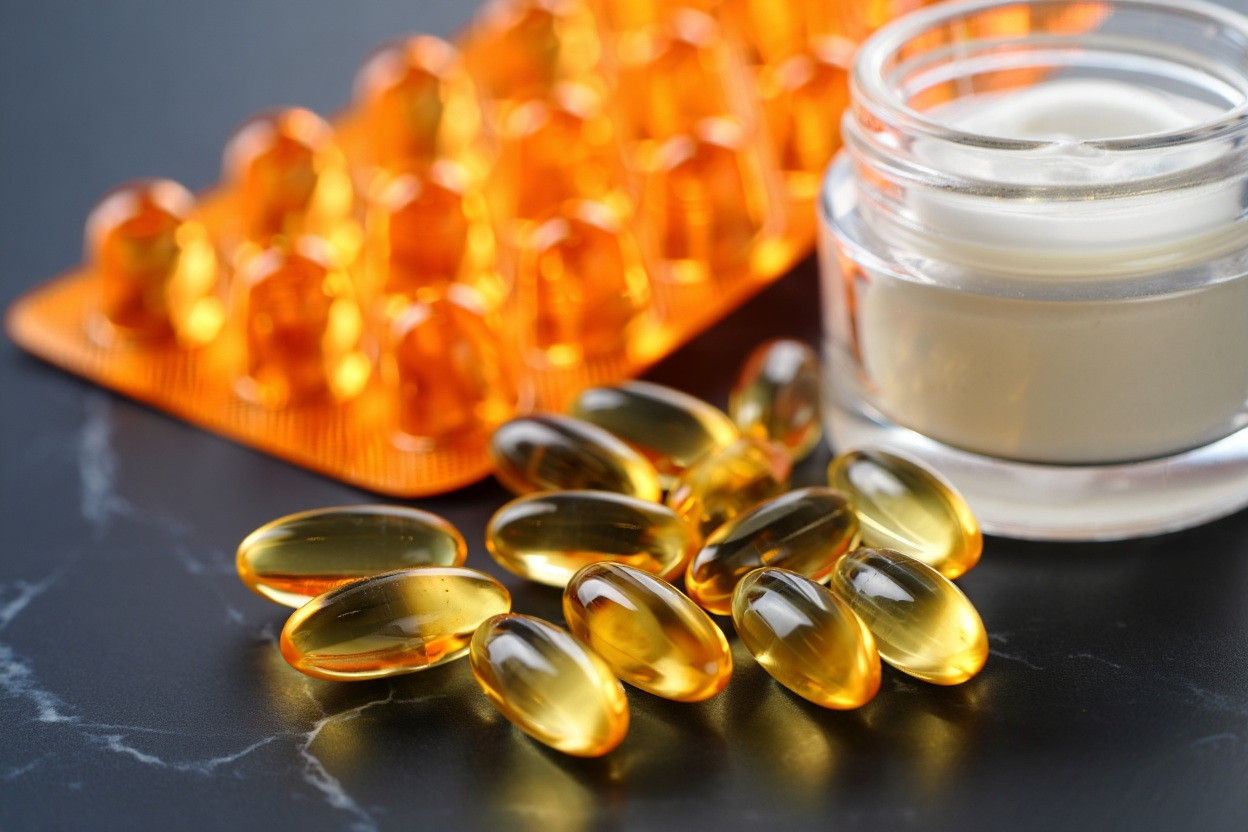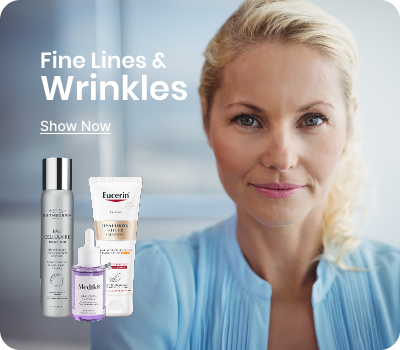
For decades, Vitamin E has been a star ingredient in both medicine cabinets and beauty routines. From classic moisturising creams in the 1970s to the latest antioxidant serums and wellness supplements of 2025, it’s a nutrient that refuses to go out of style. And for good reason — Vitamin E plays a crucial role in protecting your cells from damage, supporting your immune system, and keeping your skin looking healthy and resilient.
However, Vitamin E is not a one-size-fits-all solution. The benefits you’ll see — whether for skin, heart health, or overall wellness — depend on how you use it, which form you choose, and how it fits into your daily routine.
In this comprehensive guide, we’ll break down the science-backed benefits of Vitamin E, the differences between oral and topical forms, and how to choose the right type for your needs. Whether you’re curious about Vitamin E supplements for overall health or Vitamin E creams and serums for glowing skin, you’ll find the answers here.
What Is Vitamin E and Why Does Your Body Need It?
Vitamin E isn’t just a single compound — it’s a family of eight fat-soluble molecules, split into two groups: tocopherols and tocotrienols. Of these, alpha-tocopherol is the most biologically active form in humans and the one most often used in supplements and skincare.
Its main roles in the body include:
- Antioxidant protection: Neutralising free radicals that cause oxidative stress, which can damage cells and accelerate ageing.
- Cell membrane integrity: Helping maintain the structure and flexibility of cell membranes, which is vital for skin health and immune function.
- Immune support: Enhancing the body’s defence mechanisms, especially important in older adults.
Dietary sources of Vitamin E are plentiful if you know where to look. Nuts (like almonds and hazelnuts), seeds (such as sunflower seeds), spinach, avocado, and plant-based oils (especially sunflower and wheat germ oil) are all rich in this nutrient.
What happens if you don’t get enough Vitamin E?
While deficiency is rare, it can occur in people with fat absorption disorders. Symptoms may include muscle weakness, impaired vision, nerve damage, and in the case of skin — dryness, irritation, and poor wound healing.
The Science-Backed Benefits of Vitamin E for Overall Health
Vitamin E’s most famous role is as an antioxidant. Free radicals — unstable molecules produced by pollution, UV exposure, and even normal metabolism — can cause cell and DNA damage. Over time, this oxidative stress has been linked to premature ageing, inflammation, and chronic diseases.
Here’s what the research shows Vitamin E may help with:
- Cardiovascular health: Studies suggest Vitamin E can help prevent oxidation of LDL cholesterol, a key step in the development of atherosclerosis. However, results are mixed, and benefits may depend on dosage and form.
- Immune function: In older adults, Vitamin E supplementation has been shown to improve certain immune responses, potentially reducing infection risk.
- Neurological protection: Some evidence suggests it may help slow functional decline in people with Alzheimer’s disease, thanks to its ability to protect nerve cells from oxidative damage.
- Eye health: As part of antioxidant combinations, Vitamin E may help slow the progression of age-related macular degeneration (AMD).
While promising, it’s important to remember that Vitamin E is most effective when consumed as part of a balanced diet, rather than in excessive supplemental doses.
Topical Vitamin E: Skincare Benefits and Limitations
When applied to the skin, Vitamin E acts as a lipid-soluble antioxidant, embedding itself into the skin’s outermost layer — the stratum corneum — where it helps neutralise free radicals and supports the skin’s natural defence system. Because it integrates into the lipid matrix of the skin barrier, it plays a vital role in maintaining moisture and resilience, making it a staple in many moisturisers, serums, and healing balms.
Key Vitamin E Skincare Benefits
One of Vitamin E’s most valuable properties is hydration and barrier repair. By helping lock in moisture, it reinforces the skin’s natural protective layer, reducing water loss and soothing irritation — particularly beneficial for dry, sensitive, or compromised skin.
As an anti-ageing ally, Vitamin E helps shield collagen and elastin from oxidative stress caused by UV exposure and pollution. This protection can slow the breakdown of structural proteins, contributing to a smoother, more youthful-looking complexion and potentially reducing the visibility of fine lines and wrinkles over time.
Vitamin E is also widely discussed for its role in scar and pigmentation improvement. Many people apply it to post-surgical scars, stretch marks, or areas of uneven skin tone in the hope of faster healing and better cosmetic outcomes. While some studies and anecdotal reports support this, the evidence is mixed, and individual results can vary greatly. In some cases, especially with older scars, improvements may be minimal.
Important Limitations of Vitamin E in Skincare and Usage Tips
Despite its potential, topical Vitamin E isn’t without drawbacks. In its pure form (alpha-tocopherol), it can be unstable, degrading quickly when exposed to light and air. This breakdown reduces its potency and can even produce irritating by-products. To address this, many formulations use stabilised forms such as tocopheryl acetate, or combine Vitamin E with other antioxidants.
Another limitation is skin sensitivity. A small but significant number of people may develop contact dermatitis — redness, itching, or rash — particularly when using high concentrations or applying directly from pure oil capsules.
A practical tip for maximising Vitamin E’s benefits is to look for products that pair it with Vitamin C. This combination not only enhances antioxidant performance but also helps stabilise both vitamins in the formula, extending shelf life and boosting protective effects.
When chosen wisely and used consistently, Vitamin E can be a valuable addition to a skincare routine, offering both immediate hydration and long-term defence against environmental damage.
Oral Vitamin E Supplements: When and Why to Take Them

Most people can meet their Vitamin E needs through a balanced diet rich in nuts, seeds, leafy greens, and vegetable oils. However, certain circumstances make supplementation beneficial or even necessary.
Who May Benefit from Vitamin E Supplementation
Some individuals have difficulty absorbing fats from their diet, which directly impacts Vitamin E uptake. This includes people with fat absorption disorders such as cystic fibrosis, Crohn’s disease, or chronic pancreatitis. In these cases, supplementation can prevent deficiency-related symptoms like muscle weakness, vision problems, or immune dysfunction.
People following very low-fat diets — often for weight loss or certain health conditions — may also risk inadequate Vitamin E intake since dietary fat is required for its absorption.
There are also rare genetic disorders that impair Vitamin E transport in the body, such as ataxia with Vitamin E deficiency (AVED). In such cases, high-dose supplementation is part of medical management under professional guidance.
Choosing the Right Vitamin E Form and Dose
Vitamin E supplements come in two main forms:
- Natural (d-alpha-tocopherol): Derived from plant oils, this form is better absorbed and retained in the body.
- Synthetic (dl-alpha-tocopherol): Produced in labs and more affordable, but with lower bioavailability.
The Recommended Dietary Allowance (RDA) for adults is 15 mg (22.4 IU) per day. The tolerable upper intake level from supplements is 1,000 mg (1,500 IU) daily — exceeding this may pose health risks.
For skin health, oral Vitamin E may enhance hydration, elasticity, and barrier function by nourishing skin cells from within. Some research also points to reduced inflammation in conditions like eczema and improved wound healing when combined with a nutrient-rich diet.
However, caution is warranted: high doses can increase the risk of bleeding, especially for people taking anticoagulants like warfarin or aspirin. Other possible side effects of excessive intake include nausea, fatigue, and blurred vision.
As with any supplement, it’s best to consult a healthcare provider before starting Vitamin E, especially if you have chronic health conditions or take prescription medications. When used appropriately, oral Vitamin E can be a helpful tool for filling dietary gaps, supporting skin health, and protecting the body from oxidative stress.
Combining Vitamin E with Other Nutrients for Maximum Results
When Vitamin E is combined with other carefully selected nutrients, its effects can be significantly amplified. These combinations can enhance skin health, support immune function, and promote overall wellness. The idea is not just to take Vitamin E alone, but to create a nutrient synergy where each compound boosts the benefits of the others.
Powerful Vitamin E Pairings for Skin and Health
- Vitamin C: This water-soluble antioxidant works in harmony with Vitamin E by regenerating oxidised Vitamin E molecules, essentially “recharging” them so they can continue protecting cells. Together, they provide enhanced photoprotection, meaning they can help shield the skin from UV damage more effectively. Vitamin C also plays a crucial role in collagen synthesis, which supports skin firmness and elasticity.
- Vitamin A (Retinol): Retinol brings cell-renewal properties to the table. While Vitamin E defends against oxidative damage, Vitamin A stimulates skin cell turnover, improving texture and tone. When paired, they create a potent anti-ageing duo. However, Vitamin A should be used with care, especially in high concentrations, as it can cause irritation if overused.
- Omega-3 Fatty Acids: Found in fish oil, flaxseed, and chia seeds, omega-3s support a healthy skin barrier, locking in moisture and reducing inflammation. Combined with Vitamin E’s antioxidant abilities, they help protect against environmental damage while keeping the skin hydrated and resilient.
- Selenium: This trace mineral is another powerful antioxidant that works alongside Vitamin E to protect cells from oxidative stress. Selenium can also support immune function and may contribute to skin elasticity by preventing damage to structural proteins.
Practical Ways to Combine These Nutrients
In skincare, many high-quality antioxidant serums include Vitamin E alongside Vitamin C and sometimes retinol, offering a multi-pronged approach to protection and rejuvenation. For example, applying a Vitamin C + E serum in the morning can help guard against daytime UV damage, while a Vitamin E + retinol product at night can support skin repair.
In supplements, these combinations often appear in multi-nutrient formulas, such as advanced antioxidant complexes or omega-rich softgels that also contain Vitamin E. For maximum benefit, it’s important to consider not just the presence of these nutrients, but their forms and dosages. Pairing them within a balanced diet can also deliver synergistic results naturally.
When used strategically, Vitamin E and its nutrient partners can provide enhanced protection, repair, and long-term support for both skin and overall health.
Vitamin E Myths, Marketing Hype, and How to Spot Quality Products
Vitamin E is often hailed as a miracle ingredient for skin health and general wellness, but not everything you read or hear is accurate. In fact, misinformation and marketing hype can make it difficult to separate fact from fiction. Understanding the common myths and knowing what to look for in a product can help you make informed choices.
Myths That Can Mislead Consumers
One of the most persistent myths is that “the more Vitamin E, the better.” While Vitamin E is essential, excessive supplementation — especially in high-dose capsules — can actually be harmful, potentially increasing the risk of certain health issues.
Another common misconception is that “topical Vitamin E works for all scars.” The reality is more complex: while some scars may benefit from Vitamin E’s antioxidant and moisturising effects, others can become inflamed or develop contact dermatitis, leading to worse appearance over time.
Marketing Tricks and Red Flags
The beauty and supplement industries often lean heavily on vague claims like “antioxidant-rich” without clarifying the form or concentration of Vitamin E. Without this information, it’s hard to gauge efficacy. Another red flag is the lack of transparency about whether the ingredient is natural or synthetic — the two can differ in potency and absorption. Perhaps the most dubious claim is when a label boasts “live Vitamin E.” This is pure nonsense; vitamins are chemical compounds, not living organisms.
Choosing Quality Vitamin E Products
To ensure you’re getting an effective product, look for the exact ingredient name on the label — for example, d-alpha-tocopherol (natural) or tocopheryl acetate (a stabilised form common in skincare). Check expiry dates and choose packaging that shields the product from light and air, as Vitamin E is sensitive to oxidation. Finally, opt for products with clinical testing or third-party verification to ensure purity, potency, and safety.
Conclusion
Vitamin E may be one of the most well-known nutrients in the health and beauty world, but its enduring popularity is backed by genuine science. From protecting your cells against oxidative stress to supporting your skin barrier and immune system, it’s a nutrient worth paying attention to — especially when you know which form to choose and how to use it.
The key takeaway? A balanced diet rich in Vitamin E foods, complemented by targeted skincare or supplementation where needed, is the smartest approach. And as with any supplement or active ingredient, quality matters more than quantity. Choose well, and Vitamin E can be a lifelong ally for both skin and overall wellness.





